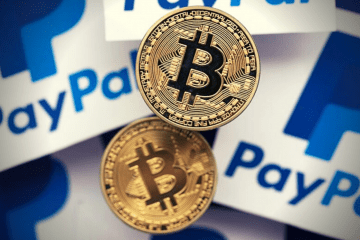Ethereum WBTC Overtakes Lightning Network In TVL By 60.26%
In a surprising turn of events befitting for the incredibly interesting crypto-world, the Ethereum based Wrapped Bitcoin (WBTC) protocol recently overtook Bitcoin Lightning Network (LN) by a wide margin. According to DeFi pulse – the data aggregator and analytics platform for Decentralized Finance (DeFi), the Lightning Network has total value locked figure of $8.9M while the Wrapped Bitcoin (WBTC) has $22.4M in total value locked (as of May 21). A large lead of over 60.26% more value and usage than the Lightning network.
Why BTC Equivalent Tokens Are Becoming Popular On Ethereum?
Lately, the BTC equivalent tokens tBTC, renBTC, sBTC, HBTC, TBTC, pBTC, imBTC, WBTC etc. have seen a meteoric rise popularity and usage. The total value of Bitcoin equivalents on the Ethereum blockchain (as of May 21) is $34.7M, according to the Bitcoin On Ethereum website. The Maker DAO itself has more BTC locked as collateral than the entire Bitcoin lightning network (1125 BTC against 913 BTC). So, whats causing users to bring their Bitcoin to Ethereum?
The transfer of Bitcoins to the Ethereum blockchain in large numbers appears to have something to do with the faster settlement times, lower fees and the various Decentralized Finance (DeFi) protocols on Ethereum. Currently, it costs around $4-6 for optimum transaction fees on Bitcoin. However, the same transaction fees becomes $0.075-0.106 on Ethereum, according to the respective fees estimators. The Bitcoin transactions take around 10 min to process, the time it takes to mine a block, at the very least. The same settlement can occur in under 30 seconds on Ethereum. So, Bitcoin holders can access the speed, scalability, vast liquidity and services of the Ethereum blockchain, while still maintaining the control of their assets in Bitcoin, bolstered by its security and scarcity.
Bitcoin holders interested in bringing their BTCs to Ethereum seem particularly interested in getting exposure to Decentralized Finance (DeFi) services. On the Ethereum blockchain, the Bitcoin equivalents can be used to borrow, lend and invest in DeFi services. For instance, WBTC can be used as collateral for DAI stablecoin issuance in the Maker DAO. They can also be used for generating interest or borrowing assets against collateral on the Compound or Aave platform. It can be wrapped as a synthetic asset for derivatives trading on Synthetix or traded for other crypto-assets on the automated liquidity provision platforms such as Uniswap or Kyber or Bancor. Also, automated asset management and trading strategy execution for Bitcoin equivalents is being provided by Set Protocol.
This isn’t an exhaustive description of course and the possibilities are endless. The Bitcoin owners can now put their asset to use, instead of merely holding it. It is being projected by analysts that Bitcoin equivalents will rise in both popularity and value, in the future, considering the great utility and financial benefits.
About Wrapped Bitcoin (WBTC)
Wrapped Bitcoin (WBTC) is a layer 2 solution and Bitcoin equivalent ERC-20 based Ethereum token, which is backed 1:1 with Bitcoin. It allows Bitcoin to be used on the Ethereum blockchain and specially for DeFi protocols. Its issuance and handling is taken care by a Decentralized Autonomous Organization (DAO) made up of multiple DeFi projects and asset backing is verifiable via proof of reserves.
The users supply BTC and the system mints equivalent amounts of WBTC. It is easily redeemable back to Bitcoin on its native chain, by burning WBTC tokens. The WBTC is traded on multiple exchanges or can be acquired by going through DeFi protocols of Dharma, Kyber, Set Protocol, GOPAX, AirSwap, Prycto, Ren and DiversiFi (KYC/AML might be required).
About Lightning Network
The Lightning Network (LN) is a layer 2 protocol built on top of the Bitcoin blockchain that seeks to improve scalability and settlement speed, by moving small and frequent transactions off-chain, allowing for fast peer-to-peer transactions with low fees. The protocol relies on micro payment channels restricted by their deposits size, which connect with each other and move liquidity amongst themselves. Only after a channel has been closed is its balance sent to the actual Bitcoin blockchain and updated in the ledger.
Source: cryptoticker.io


